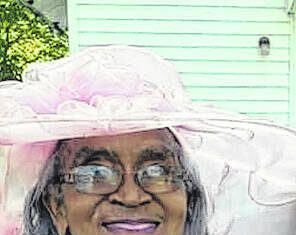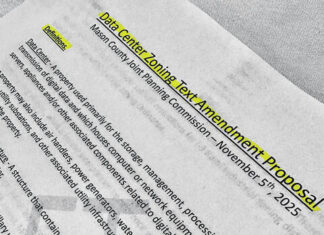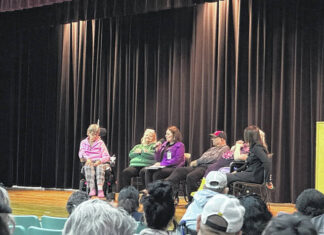Although Lewis Collins lived in Mason County, his publication, Collins’ Historical Sketches of Kentucky recorded the early days of the entire state.
Lewis Collins is known as the state’s first historian. He owned and was editor of The Eagle newspaper in Maysville for 27 years.
His book takes readers from the prehistoric days of Kentucky through its time of settlement in 1847, when his writings were published for the first time. The book at that time was 590 pages and contained illustrations of buildings, rivers, towns and more.
When his son, Richard Collins expanded upon his father’s work following his death in 1870, the book went from one volume to two, containing 1,487 pages. Published in 1874, Richard Collins’ edition includes his father’s early writings and expanded upon numerous topics including the state’s religions, poets and poetry, every county, the freemasonry and the public education system.
The publication is still considered the authority on early Kentucky history.
So who was Lewis Collins?
He was born Christmas Day of 1797 near Grant’s Station, several miles northeast of Bryant’s Station in Fayette County. His father was a Revolutionary soldier of the Virginia Army and Lewis was one of three sons. He was orphaned at the young age of 13 and worked for Joel R. Lyle of the Paris Citizen in 1813. It was in 1814 that he came to Washington with his friend and teacher, David V. Rannells. He assisted Rannells with the management of the Washington Union until the fall of 1820, when he purchased The Eagle (newspaper) in Maysville.
The Eagle was begun by Richard and Joab H. Corwine in 1814 as The Dove, established in Washington. The two men moved the paper to Maysville under the new name and had offices on the west side of Sutton Street. They sold the paper to Aaron Crookshank in 1817, and then Lewis Collins bought the paper in 1820.
Lewis Collins was a man of business and community service. He served the Presbyterian Church for 13 years as a deacon and 35 years as an elder; he was school commissioner for almost 20 years; he was the county’s first judge to presided over the Mason County Court from 1851 – 1854.
He was also one of 21 men on a committee comprised of citizens from Kentucky and Ohio who pledged their devotion to the Union in January 1860.
He was an ally of the Kentucky Statesman Henry Clay and it is noted in a 1964 article, written by his great-great-granddaughter Patti McClanahan, for The Independent newspaper, that Lewis “helped persuade Henry Clay to usher through Congress the legislation known as the Maysville Road providing for the sales of shares of the Maysville, Washington, Paris and Lexington Turnpike Company. This was in May of 1830 and President Jackson’s extraordinary veto 12 days later gave the road fame throughout the nation. (In fact, it may be the only time that Maysville made the American history book since the veto established a precedence for the withholding of Federal funds in highway building.)”
Lewis Collins wound up being the treasurer of the turnpike company that eventually built the road through private subscriptions.
He was also president and treasurer of the Maysville and Germantown Turnpike Road Company and treasurer of the Maysville and Mount Carmel Turnpike Road company.
When Maysville was incorporated in 1833, he was a member of the first city council.
In 1847, the same year he sold his newspaper, Lewis Collins experienced the laying of the first telegraph lines from Maysville to Cincinnati and observed the opening of the Maysville-Lexington Railroad in 1859.
In a letter to his daughter, Maria in 1863, he writes the area was being overrun by soldiers of both the whole 10th and a battalion of the 14th Kentucky.
He built his home at the the top of Short Street and West Third Street from 1834 to 1835 and he was buried in the Maysvlle Cemetery at his death in January 1870.
With all of his accomplishments through his business and civic works, Lewis Collins was known by all as an honest man.
Providing further proof of this reputation, when his book was published he gave credit to his brother-in-law, Henry Previance Peers for laying the foundation for the piece. Apparently, Peers had designed the work to be a small “Gazetteer of the State.” Peers had collected and arranged the major parts of the materials and descriptions of towns and counties. It was upon his sudden death in 1846 that Lewis Collins came in possession of the material and “determined to remodel them and make such additions as would give permanency and increased value to the work.”
Upon his father’s death, Richard Collins expanded the 1847 edition to the year 1874. Richard Collins died on New Years Day 1888.
The book was out of print for many years beginning in 1924; it was reprinted in 1966.
The Lewis Collins home, built from 1834 and 1835, is at the top of Short Street at the intersection of West Third Street.
This historical marker is located at the Mason County Courthouse lawn, facing Sutton Street. The marker was erected and dedicated in November 1965. It was located on Sutton Street because that is where the first offices of The Eagle, Collins’ newspaper, were located. The offices later moved to Stanley Reed Court Street.
This historic marker honoring Richard Collins, the son of Lewis Collins is on McDonald Parkway near the Sutton Street intersection. Richard Collins added to his father’s first publication of the History of Kentucky, which was only 590 pages when published in 1847. When Richard Collins’ two volume History of Kentucky was published in 1874, it was 1,487 pages.






